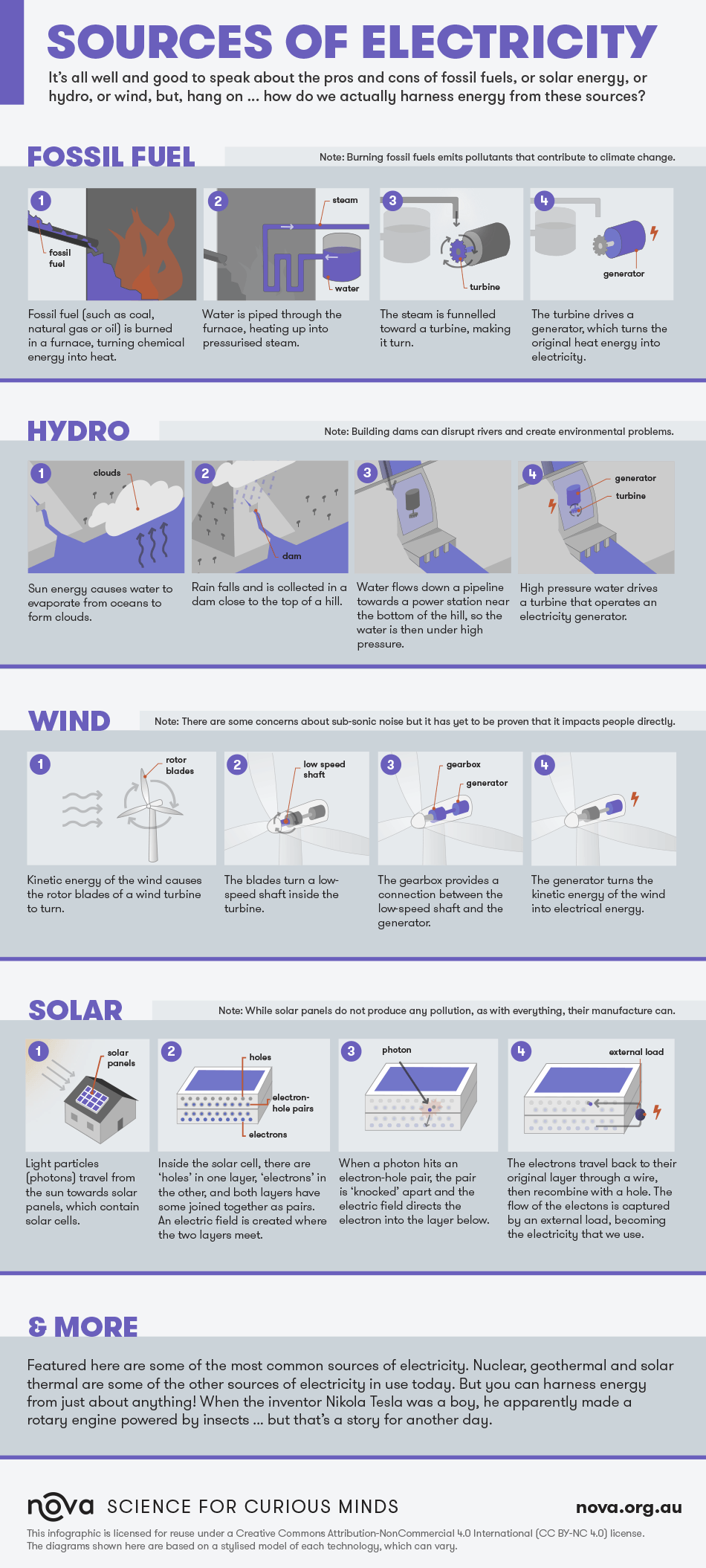- Home
- Infographics
- Sources of electricity
Sources of electricity
How do we harness energy from different sources? This infographic shows how it works for fossil fuel, hydro, wind and solar.

It’s all well and good to speak about the pros and cons of fossil fuels, or solar energy, or hydro, or wind, but, hang on ... how do we actually harness energy from these sources?
Fossil fuel
Note: Burning fossil fuels emits pollutants that contribute to climate change.
- Fossil fuel (such as coal, natural gas or oil) is burned in a furnace, turning chemical energy into heat.
- Water is piped through the furnace, heating up into pressurised steam.
- The steam is funnelled toward a turbine, making it turn.
- The turbine drives a generator, which turns the original heat energy into electricity.
Hydro
Note: Building dams can disrupt rivers and create environmental problems.
- Sun energy causes water to evaporate from oceans to form clouds.
- Rain falls and is collected in a dam close to the top of a hill.
- Water flows down a pipeline towards a power station near the bottom of the hill, so the water is then under high pressure.
- High pressure water drives a turbine that operates an electricity generator.
Wind
Note: There are some concerns about sub-sonic noise but it has yet to be proven that it impacts people directly.
- Kinetic energy of the wind causes the rotor blades of a wind turbine to turn.
- The blades turn a low-speed shaft inside the turbine.
- The gearbox provides a connection between the low-speed shaft and the generator.
- The generator turns the kinetic energy of the wind into electrical energy.
Solar
Note: While solar panels do not produce any pollution, as with everything, their manufacture can.
- Light particles (photons) travel from the sun towards solar panels, which contain solar cells.
- Inside the solar cell, there are ‘holes’ in one layer, ‘electrons’ in the other, and both layers have some joined together as pairs. An electric field is created where the two layers meet.
- When a photon hits an electron-hole pair, the pair is ‘knocked’ apart and the electric field directs the electron into the layer below.
- The electrons travel back to their original layer through a wire, then recombine with a hole. The flow of the electons is captured by an external load, becoming the electricity that we use.
And more
Featured here are some of the most common sources of electricity. Nuclear, geothermal and solar thermal are some of the other sources of electricity in use today. But you can harness energy from just about anything! When the inventor Nikola Tesla was a boy, he apparently made a rotary engine powered by insects ... but that’s a story for another day.
About this infographic
This infographic is licensed for reuse under a Creative Commons Attribution-NonCommercial 4.0 International (CC BY-NC 4.0) license. The diagrams shown here are based on a stylised model of each technology, which can vary.





